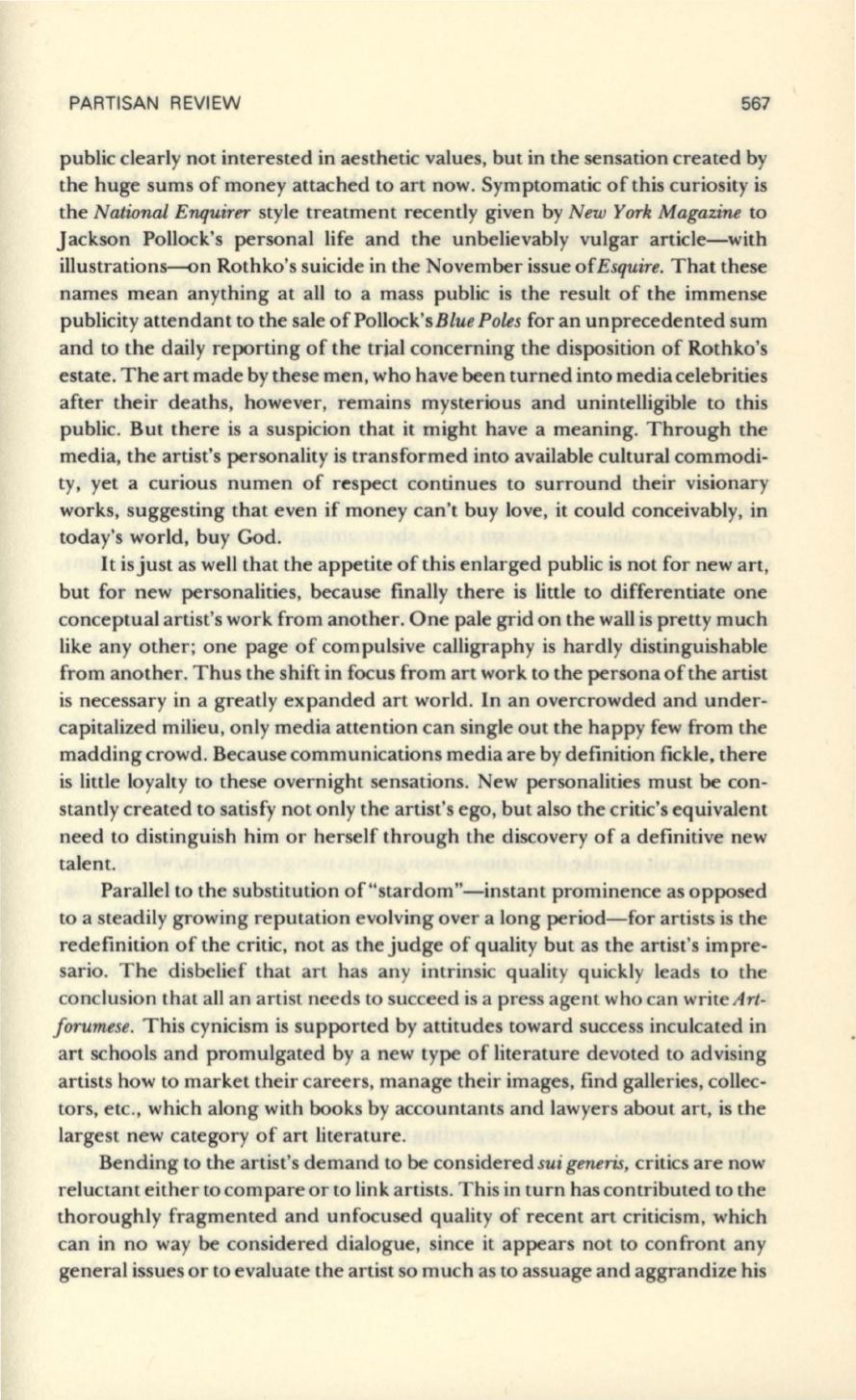
PARTISAN REVIEW
567
public clearly not interested in aesthetic values, but in the sensation created by
the huge sums of money attached to art now. Symptomatic of this curiosity is
the
National Enquirer
style treatment recently given by
New York Magazine
to
Jackson Pollock's personal life and the unbelievably vulgar article-with
illustrations-on Rothko's suicide in the November issue of
Esquire.
That these
names mean anything at all to a mass public is the result of the immense
publicity attendant to the sale of Pollock's
Blue Poles
for an unprecedented sum
and to the daily reporting of the trial concerning the disposition of Rothko's
estate. The art made by these men, who have been turned into media celebrities
after their deaths, however, remains mysterious and unintelligible to this
public. But there is a suspicion that it might have a meaning. Through the
media, the artist's personality is transformed into available cultural commodi–
ty, yet a curious numen of respect continues to surround their visionary
works, suggesting that even if money can't buy love, it could conceivably, in
today's world, buy God.
It
is just as well that the appetite of this enlarged public is not for new art,
but for new personalities, because finally there is little to differentiate one
conceptual artist's work from another. One pale grid on the wall is pretty much
like any other; one page of compulsive calligraphy is hardly distinguishable
from another. Thus the shift in focus from art work to the persona of the artist
is necessary in a greatly expanded art world. In an overcrowded and under–
capitalized milieu, only media attention can single out the happy few from the
madding crowd. Because communications media are by definition fickle, there
is little loyalty to these overnight sensations. New personalities must be con–
stantly created to satisfy not only the artist's ego, but also the critic's equivalent
need to distinguish him or herself through the discovery of a definitive new
talent.
Parallel to the substitution of "stardom"-instant prominence as opposed
to a steadily growing reputation evolving over a long period-for artists is the
redefinition of the critic, not as the judge of quality but as the artist's impre–
sario. The disbelief that art has any intrinsic quality quickly leads
to
the
conclusion that all an artist needs to succeed is a press agent who can write
Art–
forumese.
This cynicism is supported by attitudes toward success inculcated in
art schools and promulgated by a new type of literature devoted to advising
artists how to market their careers, manage their images, find galleries, collec–
tors, etc., which along with books by accountants and lawyers about art, is the
largest new category of art literature.
Bending to the artist's demand to be considered
sui generis,
critics are now
reluctant either to compare or to link artists. This in turn has contributed to the
thoroughly fragmented and unfocused quality of recent art criticism, which
can in no way be considered dialogue, since it appears not to confront any
general issues or to evaluate the artist so much as to assuage and aggrandize his


